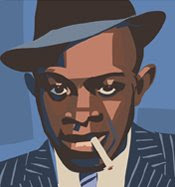
These are eight self portraits. They're all in order bar the first one. So clockwise from top left they are: 1990 drawing of me as a 14 yr old, 1984 first drawing at college, 1984 first ever oil painting, 1986 oils and compass, 1986 oil and pencil on paper, 1992 watercolour, 1996 oils (I was drunk when I painted it) and 1999 oil sketch.
Don't know if you learn anything from these, other than I got better at drawing, just thought I'd post them anyway.












![[huzzahnoir2.jpg]](https://blogger.googleusercontent.com/img/b/R29vZ2xl/AVvXsEhfLdDLBBPfTSXRPWrnWAtBD0aOZCN-zriqioFPJjPJkoxY_aiXqD070FccoLIdFOmwjNgUsYhjDfS9Rby_Ma7JXa-i5imDIl2Ytku1_gMjs3jRgRlOJMALTP_pDI6ovoek8_Uhz-zi7Eum/s1600/huzzahnoir2.jpg)